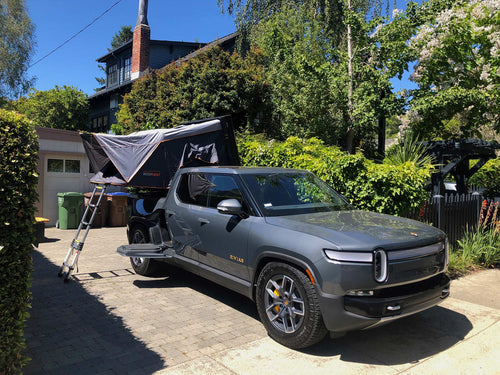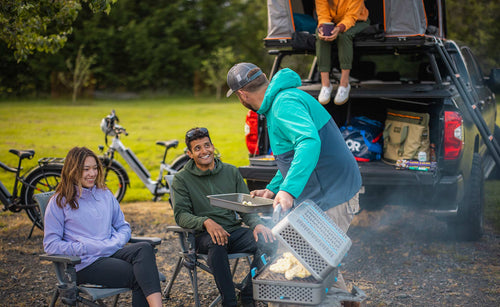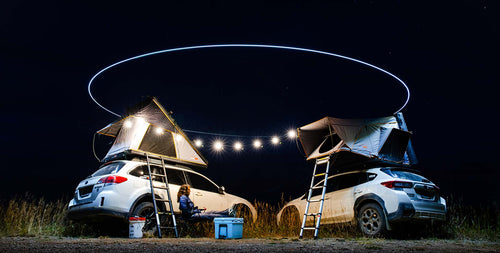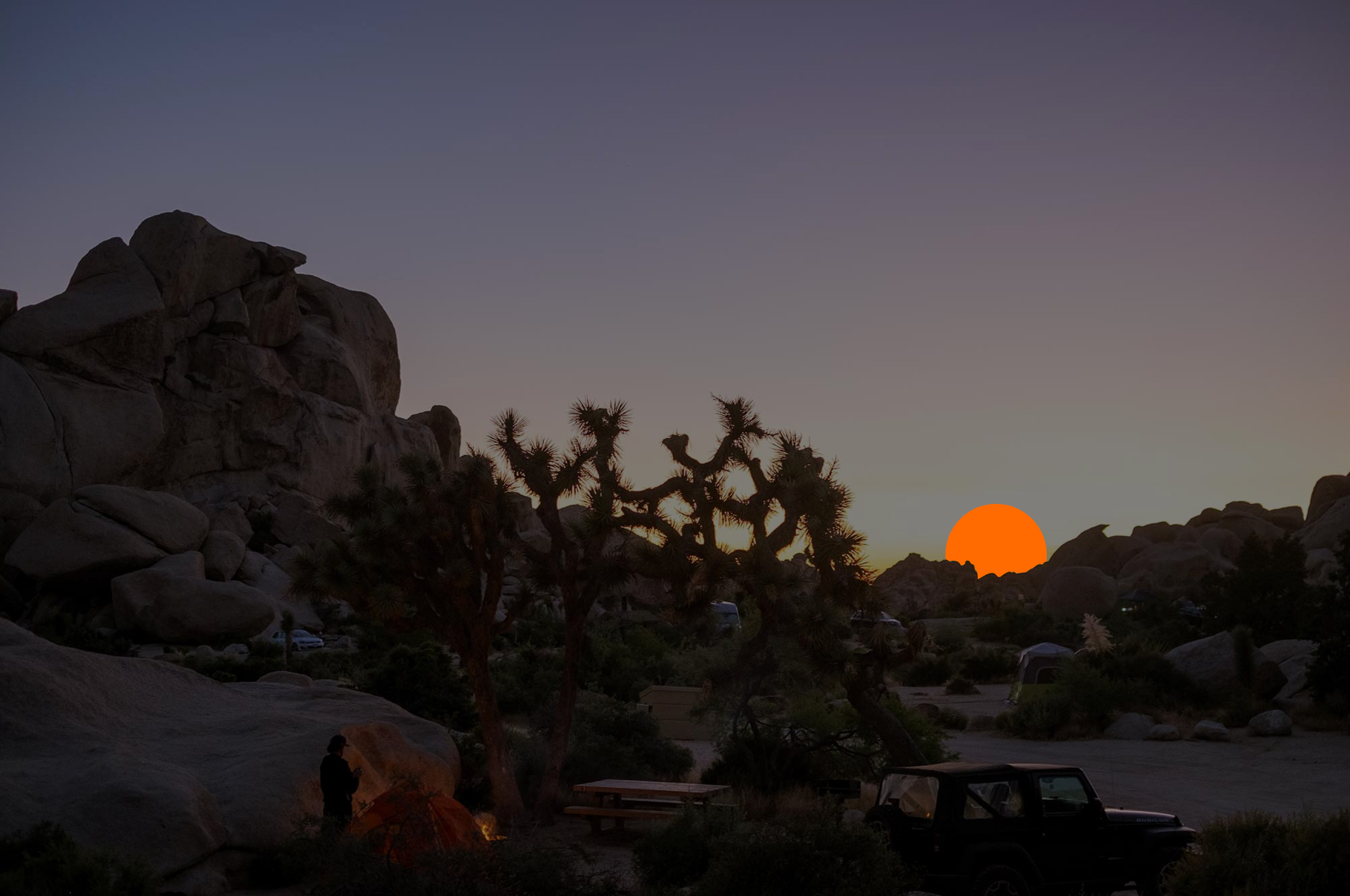Kids are going back to school again — but this school year is looking different than ever before. It’s different for parents too, as many have taken on the role of home-schooler and parent (not to mention having a job).
But out of the struggle there is opportunity to be found: more time with your kids means more time to explore the great outdoors.
There’s never been a better year to introduce your child to the benefits of camping and spending time in the mountains, forests, and deserts of America. If your child is going to be stuck behind a screen at home all day, why not take their classroom to a new learning environment, where they can experience new sights, sounds, and reap the benefits of spending time outside?
Spending time in mother nature has tons of mental and physical health benefits. It’s especially beneficial for your kids, too. Spending time outside can:
- Decrease anxiety
- Lift mood
- Improve emotional health
- Increase attention
- Improve physical health due to increased physical activity
- Build self-confidence and creativity
When you go roof top tent camping with your kids, they’ll learn resilience and new skills through hands-on learning: building fires, setting up camp, cooking, identifying plants and wildlife, and how to leave no trace and be a good steward of the planet.
With a Roofnest hard shell roof top tent, a Wi-Fi hotspot, and a little preparation, you and your family could be experiencing the great outdoors and knocking out that schoolwork, all while avoiding cabin fever and brain-drain from too much time at the house.
Here are a few ideas on ways to take advantage of the unique opportunity this time provides, and how to merge your passion for the outdoors with your kid’s need to learn and make progress in their education.
1. Teach Hands-On Geography
In the classroom, your child learns the names of states, cities, national parks and natural landmarks on a map. When you go camping with kids, they get to experience those places firsthand.
Whether you’re hiking mountain trails or kayaking down a river, outdoor activities in nature are a great opportunity to teach your child geography.
Make it a point to get maps of the places you’re traveling to, and pack a compass (which is always a good idea, anyway!)
When you leave your campsite, work with your child to show them how to read the map and use the compass, and trace your route as you explore the surrounding area. When it’s time to head back to your roof top tent, encourage your kid to lead the way.
Do they know how to get back? Do you? If not, one of these outdoor adventure apps might can help >
2. Bring a Telescope for a Lesson in Astronomy
There’s nothing like the sight of a star-filled sky out in the middle of nowhere. In town, light pollution keeps us from seeing most of the stars in the sky, and dims the light from the ones we can see.
But when you get far away from civilization, the night sky becomes spectacular. Wait until your kid sees the long arm of the Milky Way Galaxy stretching across the night sky. They’re sure to be starstruck — literally!
Not to mention spotting shooting stars, satellites, and even the International Space Station! Out in the wild, you can see it all.
Packing a telescope can really kick your astronomy fun up a few notches. Using a telescope is a great chance to teach your kid about the moon, galaxies, constellations, and more.
It’s also an excellent way for us all to gain a little perspective on our place in the universe. Here are some good starter telescopes for kids of different ages >
Pro Tip: The StarWalk and SkyView apps are also pretty amazing ways to explore the night sky — all you need is your smartphone!
3. Learn How to Identify Plants, Trees, and Wildlife
Pack some field guides for wherever you’re heading to take advantage of the wealth of plant and wildlife you’ll encounter. It’s one thing for your child to spot unique flora and fauna, but another to actually learn about them.
With a field guide to birds, for example, your child can look up a bird as they’re watching it, and learn all about its migratory patterns, eating behaviors, and much more. It’s a cool and easy way to connect with nature.
Plus, the act of identifying and matching patterns, like when looking for certain plants or animal markings, is a great way to help develop your child’s brain.
4. Turn the Campfire into a Chemistry Class
Most kids love campfires. A campfire means telling funny (or scary!) stories, eating s’mores, and enjoying the warmth and coziness before heading off to bed.
A fire is also an elemental chemical reaction, one that presents an opportunity for learning some cool stuff.
Does your kid know what makes a fire burn? What does the wood turn into after it burns? You might need to look up the answers to some of these questions yourself!
When you go camping with your kid, you can guide them on how to build a fire (a useful skill no matter who you are), and understand the scientific elements that make up a fire possible.
Plus, if they understand the elements that go into making a successful fire, they’re more likely to understand how to build a better fire — with enough oxygen, tinder, and heat — and how to make sure the fire is contained and completely put out at the end of the night.
5. Practice Phys Ed Every Step of the Way
This goes without saying, but spending time outdoors can be the ultimate form of gym class. Between hiking, riding bikes, swimming, and paddling a canoe, your kid can burn some major calories, build muscle, develop motor skills, and have a blast while doing it.
With all that activity, there’s no doubt they’ll be a dodgeball champ when they head back to school!
Plus, physical activity has loads of benefits for your kid’s emotional and mental health as well, which is especially important during these stressful times. It helps to promote quality sleep, boosts moods, and much more.
6. Witness Geology in Action
The wild places of America offer an abundance of geological marvels. From the Grand Canyon to the iconic Arches in Utah, the natural power of erosion has shaped our landscape in amazing ways.
In school, your student will learn about the incredible science behind geology, but only in theory. When they see it with their own eyes, they can really appreciate the power of the natural forces in shaping our planet.
How to Get Portable Wi-Fi While Camping
If you want your kid to be able to turn in homework, tune in to online classes, watch videos and more while traveling, you’ll need to make sure you have a reliable internet connection.
There are three ways to secure an internet connection from your car/roof top tent/campsite.
1. Easiest to get started: Use your phone as a hotspot
This is the easiest solution because it’s already in your pocket, and it’s free.
If you own a modern smartphone, it should have Wi-Fi hotspot functionality. When you turn this on, your phone creates a Wi-Fi network that other devices can connect to (like your child’s laptop or tablet) through your phone’s cellular data connection.
The pros:
- Easy
- Affordable
The cons:
- Uses up your phone battery quickly
- Signal is only as good as your cell signal — if you’re off the beaten path, this may or may not be a reliable option.
- If you also want to use your phone while your child is connected to its Wi-Fi hotspot, the battery life and internet speed will suffer.
This is exactly like using your phone as a hotspot, except it’s a dedicated device for the job. A mobile hotspot also means more options and flexibility, and if you get the right hotspot, a better signal.
The pros:
- Higher end models have strong reception and more bandwidth for multiple devices to connect at the same time
- You can connect an antenna to boost signal even more
The cons:
- You have to buy the hotspot and pay for a separate monthly data plan for its service.
3. Most reliable for off-the-grid adventures: Invest in a portable satellite terminal
If you’re planning on doing some extended travel to remote areas, you’ll want a reliable connection. Enter: The portable satellite terminal.
A quality one isn’t cheap ($700 for the device, plus at least $135/month for the service), but it’s your best option for coverage anywhere and everywhere you can find an empty patch of sky (that shouldn’t be too hard!).
The pros:
- Access to the internet wherever you may roam
The cons:
- The price tag and ongoing cost
Once you get a solid mobile internet connection set up, your child will be all set and ready to experience the true meaning of the words “remote learning.”
If you’re going to make the most of life on the road with your family, you’ll probably want to bring some of life’s creature comforts along with you. Portable Wi-Fi is just a start. If you really want to upgrade your ride for full on #vanlife status, you can go even further.
Portable power sources, toilets, showers, cooking gear, and more are all ways to take your roof top tent camping game to the next level.
Read our full guide to living a connected life on the road >




